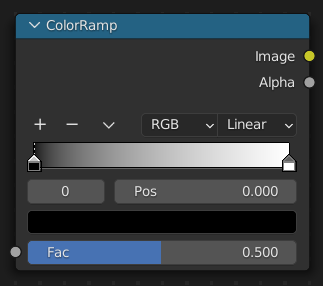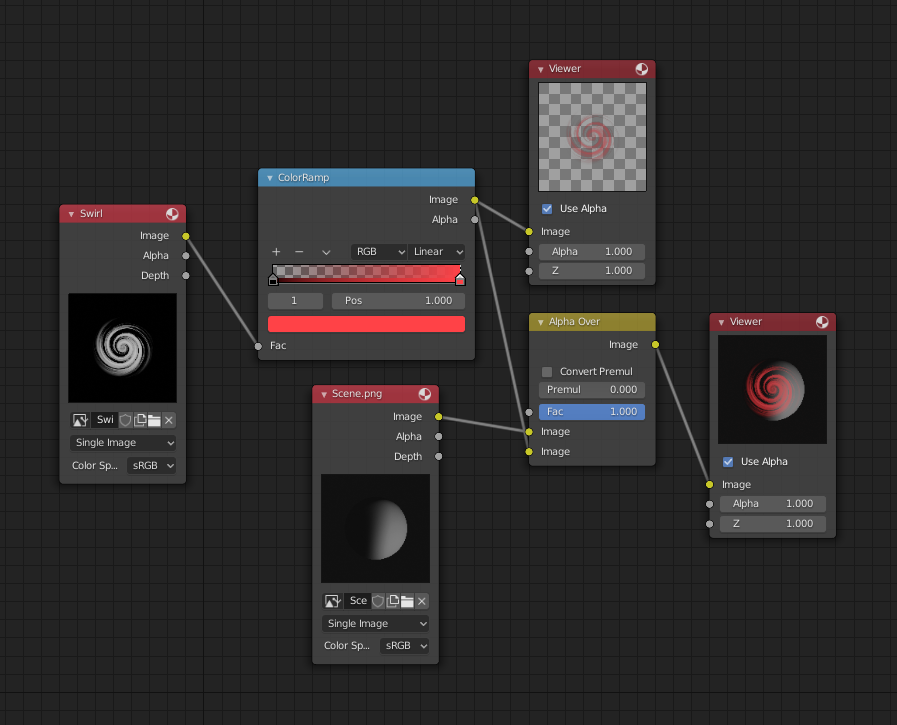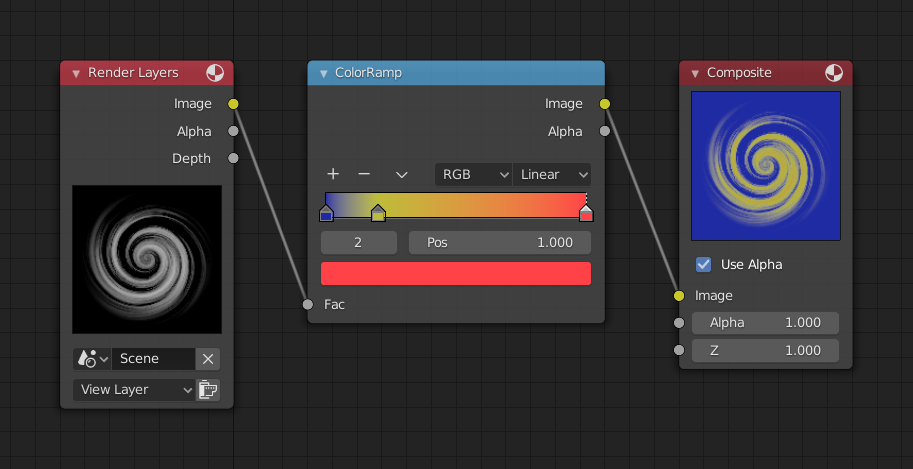颜色渐变节点¶

颜色渐变节点用于使用渐变将数值映射为颜色。
输入¶
- 系数
要映射的值。0.0 表示最左边的颜色,1.0 表示最右边的颜色。
属性¶
- 渐变色
参见颜色渐变部件。
输出¶
- 图像/颜色
标准颜色输出。
- Alpha
标准化遮罩输出。
示例¶
Alpha遮罩¶
色彩渐变的一个经常被忽视的用例是将黑白图像转化为带透明度的彩色图像。

在上面的示例中,一个缺少 alpha 通道的黑白漩涡图像作为 系数 被输入颜色渐变节点。
颜色渐变节点在渐变左端设置为纯透明色,在右端设置为全红色。在预览器节点中可以看到,颜色渐变节点输出的图像在输入黑色的地方是透明的,在输入白色的地方是不透明的。
彩色化图像¶
在此示例中,将多种颜色添加到颜色渐变中,从而将黑白图像转换为火焰状漩涡。

输入图像中的灰色阴影映射为三种颜色:蓝色、黄色和红色,全部完全不透明。在图像为黑色的情况下,颜色渐变将替换为蓝色(第一个色标)。如果是灰色阴影,则 "颜色渐变" 会从渐变中输出相应的颜色(蓝色、黄色到红色)。在图像为全白的情况下,颜色渐变输出为红色。